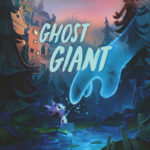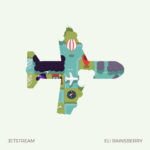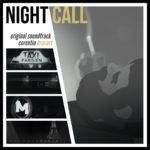Celebrate the satisfying sounds of “Chicory: The Sounds of Picnic Province”

Image courtesy of artist } Design credit: Alexis Dean-Jones
Take one glance at the extensive body of musical work built up by composer and producer Lena Raine, and it almost seems sufficient as a self-explanatory introduction for the Seattle, WA creative. However, for those just now hearing of this highly-sought-after professional and who arrive here without a recallable point of reference for what Raine has composed, her sonically versatile discography contains a veritable ocean of melodies that cover a wide swath of emotional states and scenarios both relatable and imaginary. That said, Raine’s latest release, Chicory: The Sounds of Picnic Province, puts focus on a setting designed around the latter mindset. Thus, for this particular dive into Raine’s sea of songwriting, what awaits is serene waves, glittering clarity, and space for peaceful meditation, rather than thunderous waves, aggressive currents, or murky depths that might otherwise be channeled through some of Raine’s other projects.

Composer/Producer Lena Raine | Image courtesy of artist | Photo credit: Sara Ranlett
Technically speaking, Chicory: The Sounds of Picnic Province is a complementary album to its immediate predecessor, Chicory: A Colorful Tale, which Raine released on Bandcamp just a couple weeks prior in June. While the latter is an extensive 60 piece assembling of the primary music heard in the coloring-based adventure game of the same name, the former more recent record is more of an B-side soundtrack – though not at all in the sense of being fueled by tracks of lesser quality. Unlike its predecessor, the pieces included on “Picnic Province” are derived from the background music given to space between each of the main landscapes of the game, and all the ambience that lines that aspect of the game’s sound design and musical composition.
While game soundtracks have more than come into their own over the last two decades, with entire symphonic concerts and limited edition pressings of game scores being highly coveted commodities and experiences, it’s still a marvel when a new soundtrack manages to grab and effortlessly hold the fascination of the listening public – especially those who may have not even played the accompanying game or seen visual art or footage from it prior to listening. So, for Raine to then pull from even more inspiration and creative drive to write an entire second soundtrack’s worth of compositions for for “Chicory: A Colorful Tale,” – made up of music dedicated to an even more subtle aspect of the game than game music is already deemed unto itself – showcases just how meticulous and creatively dedicated she was when initially pairing the game’s footage with her ideas. By virtue of this album even existing and being so well received, it’s inarguable that no creative expense was spared on Raine’s part.
All that having been said, with the understanding that “Picnic Provinces” is a game wide enough for all audiences demographics, and it being based around a calmer activity like coloring, one might wonder how much additional nuance could be drummed up for Raine’s second collection of compositions beyond any and all ambient elements included in the game’s main soundtrack. The answer is actually quite brilliant: Raine doesn’t scrape the bottom of the barrel just to fill a soundtrack quota. Nor does she go completely in the opposite direction and serve up tracks that draw lots of attention to themselves via sonic quirks or forcibly memorable motifs à la jingles meant to stick in one’s head after only the briefest of time has passed. The music of “Picnic Province” suitably embraces a mellow, quieter, tranquil disposition through its 19 tracks but, doesn’t stop at the idea of “Here are 19 original, tranquil tracks not on the other soundtrack, have a nice day.” Though the mood of the music isn’t where drastic surprise is to be found, the listening experience itself places Picnic Province in its own experiential category and gives the record an additional layer of intrigue beyond pointing out the melodies nestled into the game’s less prioritized spaces.
Explained by Raine herself as best “meant as a one-shot listening experience rather than [as] individual tracks,” this piece of insight and single recommendation reveals “Picnic Province’s” biggest marvel: that despite being intended as separate and functionally distinct, the in-between fragments of musical ambience in the game hold their strongest listening potential as a wholly unified body of sound. The idea of unification and avoidance of disconnect is so integral that Raine explicitly suggests a gapless audio player so as to subvert any chance of distraction or loss of concentration. That element of functional contradiction is utterly satisfying unto itself but then of course, the actual compositions marvelous in their own rights. When one finally settles in to listen, fully prepared to immerse their mind among the sounds and take away focus from outside stimulation, Raine’s sense of melody, musicality, and production is a welcome treat without any necessary prerequisites.
Every instrumental component on “Picnic Province” is gorgeous; the sound quality of each pluck, each audible gust of air, each chirp of a bird, is given such care with regard to its spatial relationship with everything else in its orbit. That said, the ambiance of the album is enhanced but not oversaturated with echo for the sake of having an abundance of echo and forcibly creating a sense of bigger sonic space. Instead, everything is given just the right amount of space to stand on its own or blend tonal edges together when the situation calls for it. One could say the spatial production maintains its pleasing ratio of clarity and blending in somewhat the same fashion as the vivid but delicate artwork of Alexis Dean-Jones. Some tracks let their tones and melodies flow with the gradualness and fluidity of a puddle running down an incline and others place precise, clear focus around the instrument providing the track’s central motif. When the latter occurs, it’s a rarer moment of intensity relative to the album as a whole but it shows that Raine doesn’t shy away from conveying varying energy levels, just because the album is propelled by an underlying theme of undisturbed ambience.
The sheer diversity of instrumentation is a delight as well, with features from staples like string quartet instrumentation to the bassoon, melodica, English horn, Irish whistle, and even a Quena. It’s not entirely unheard of to see the game music world expand and experiment well outside the bounds of conventional rock band instrumentation but Pinic Province, really goes above and beyond to highlight a potpourri of sounds and timbres, some of which might sound eerily similar at first but in truth hold their own space in their musical spectrum. This again feels like Raine providing another demonstration of her mindfulness for the specific game she is scoring. Colors can vary with the slightest darkening or lightening, sometimes appearing indistinguishable without enough contrast. However that doesn’t mean the distinction isn’t there or shouldn’t be applied.
Collectively, Chicory: The Sound of Picnic Province is a beautifully deceptive album. It’s a masterclass by Raine in how to create for the masses while not compromising on writing to one’s fastidious potential. And furthermore, it’s an exemplary showing of how no aspect of open-ended composing need be given the creative brush off. Even the most underutilized aspects of a sensory experience can be given dedicated artistic vision, to what can ultimately become superb art on its own.
Chicory: The Sounds of Picnic Province is available now.
Find it on Bandcamp and streaming on Spotify.
Stay connected with Lena Raine through her official website, official discography website, and these social media outlets:
Twitter (@kuraine)
Instagram
YouTube
Bandcamp
Spotify




Leave a Reply